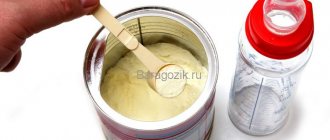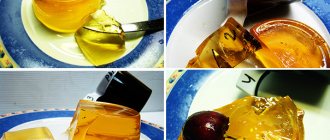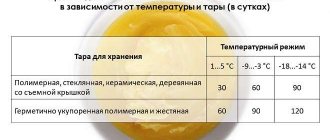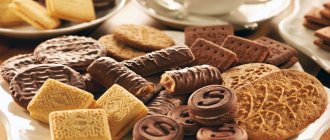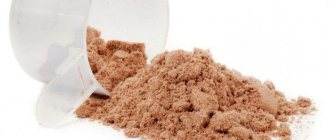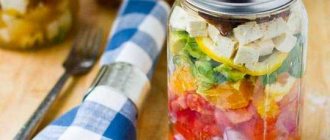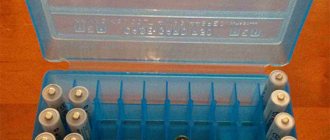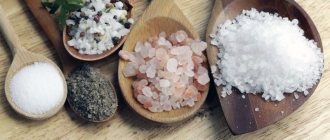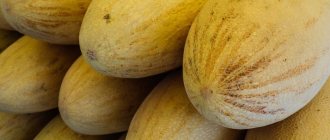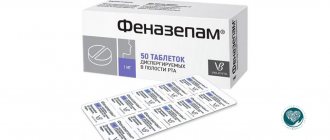Artificial and mixed feeding
Author: Olga Rybakova
There is nothing healthier for a newborn baby than mother's milk. Due to circumstances, women resort to the use of artificial nutrition. Due to illness or a simple lack of breast milk, the baby has to be transferred to dry or liquid formulas based on cow's or goat's milk. The properties of such nutrition cannot be compared with the benefits of breastfeeding. However, manufacturers are striving to bring the composition of artificial nutrition components closer to human milk. It is important for young parents to know how to dilute formula for newborns, because the proportional ratio of water and dry matter directly affects the health and well-being of the child.
Why is it so important to dilute baby formula correctly?
When thinking about how to properly prepare the mixture, it is important to understand why modern pediatricians often focus the attention of parents on observing the rules of this daily process. If the formula is too thin, the infant will be malnourished. This will have serious consequences for his body. Possible problems that you will encounter if you feed the baby a formula in a lower concentration than prescribed by age are the following:
- frequent waking up and problems sleeping;
- lack of weight gain;
- developmental delay;
- avitaminosis;
- rickets and other diseases.
In certain situations, parents deliberately increase the concentration of dry matter and try to give their baby a nutritious product, not paying attention to the recipe and cooking recommendations. By making the mixture thicker, parents also harm the little one. The concentrated mixture is more difficult for the fragile stomach of a newborn to digest. Overfeeding often provokes:
- colic;
- regurgitation;
- problems with stool;
- metabolic failures;
- the appearance of excess weight, and as a result, disturbances in the functioning of internal organs and the musculoskeletal system.
Compliance with proportions and recommendations is a necessary condition for the baby’s health. You should not be negligent about the recommendations on the packaging. They were developed by manufacturers and pediatricians taking into account the needs of the child’s body in accordance with age characteristics. If the mother complies with the preparation requirements, but the baby continues to express anxiety during food consumption or after feeding, it is better to consult a doctor. The doctor will individually calculate the portion for the child.
What is the difference between formula for children over one year old and milk and kefir?
If after a year the baby drinks only milk and fermented milk products, there is a risk that he will receive more protein than he needs, and not enough vitamins and minerals. The protein content in the milk formula corresponds to age standards. It also contains polyunsaturated fatty acids, vitamins A, C, E, D, selenium, manganese, calcium and phosphorus, iron, zinc and copper, necessary for brain formation, and there are probiotics and prebiotics. Thus, formula milk better meets the needs of the child’s body than whole milk and fermented milk products. But unless a child has an allergy or intolerance to cow's milk protein, dairy products should not be excluded from his diet. Formula milk will complement, and not replace, them in the baby’s menu. So, during the second or third year of life, formula milk should be present in the baby’s diet.
Infant formula will provide a child over one year of age with comfortable digestion and the supply of nutrients, vitamins and minerals in accordance with age standards.
List
- Infant formula for children is easily digestible, safe and does not require special storage conditions, but the dry formula must be diluted before use, observing the proportions.
- After a year, the baby can drink the mixture not from a bottle, but from a cup. 1-2 formula feedings per day are enough - that’s 200-400 ml.
- The formula for children over one year of age has a reduced protein content compared to dairy products, and contains polyunsaturated fatty acids, vitamins, minerals, probiotics and prebiotics. But unless the child is intolerant to cow's milk protein, infant formula should complement other dairy products, not replace them.
(0 ratings; article rating 0)
Share Share Share
Detailed cooking instructions
Buy only high quality milk formula for your baby. Trust trusted, well-known manufacturers. The products “Nutrilon”, “Nestozhen”, “Nutrilak”, “Malyutka”, “Nan”, “Similac Premium” and “Bellakt” have proven themselves to be excellent. The shelf life of the product and the features of its storage deserve special attention from parents. When purchasing a new product, make sure the formula is suitable for your baby.
The gastrointestinal tract in children is imperfect. The microflora in the intestines is just being formed, so it is important to prevent bacteria and pathogenic microbes from entering the body. Preparing formula for feeding traditionally begins with preparing the dishes:
- the bottle, nipple, and measuring spoon are thoroughly washed immediately after feeding;
- It is possible to use special children's products; an economical option would be to use table soda;
- pay special attention to hard-to-reach places and carvings;
- to clean containers, use a brush and special brushes that will be used exclusively for children’s dishes;
- the bottle and nipple are subject to mandatory sterilization. To do this, boil the accessories or use a sterilizer. When choosing the first method, the boiling container is used only for children's dishes;
You need to prepare the supplies in advance so as not to waste time processing them when a hungry baby asks to eat. Before cooking, mother washes her hands thoroughly with soap and also determines the ratio of water to powder.
The indicators and proportions of different manufacturers are approximately the same, since they are calculated according to the age and weight of the children. The standard is 1 scoop of powder per 30 milliliters of water. The one-time feeding rate is calculated by dividing the daily amount of food by the number of feedings.
| Recommendations for preparing the mixture | |||
| Age | Number of measuring spoons per 1 feeding | Water volume (ml) | Number of feedings per day |
| From 0 to 2 weeks | 3 | 90 | 6-7 |
| 3-8 weeks | 4 | 120 | 6-7 |
| 2 months | 5 | 150 | 6 |
| 3-4 months | 6 | 180 | 5 |
| 5 months | 7 | 210 | 4-5 |
| 6 months | 7 | 210 | 3-4 |
The powder is placed in a bottle of water, rather than liquid being poured into a container with a dry workpiece. This will avoid lumps during the dissolution process.
After placing the components, the bottle is closed with a plastic separator, then with a nipple and a protective cap. Shake the contents vigorously until the components are completely mixed.
Next, the separator is removed. Check the temperature of the nutrient fluid organoleptically. Offer the product to the baby.
Don't forget to check the temperature of the liquid before feeding. To do this, place a few drops on the wrist area.
Several important rules for preparing and storing the mixture
There are recommendations regarding what kind of water is best to dilute the mixture. The powder should be diluted with bottled baby water. You don't need to boil it to make the mixture. The liquid is specially designed for feeding babies. If you can’t buy water and have to get it from other sources, be sure to boil it and cool it to room temperature before cooking.
It is strictly forbidden to use raw tap water to prepare the mixture. You should also not take boiling water.
The optimal water temperature in which to dilute baby food powder is 35-36 degrees.
It is very important to think about food preparation if you are going on the road with your baby. Always take water and powder in separate containers. They should only be mixed immediately before feeding. If you are going for a walk in the park, take a thermos bag with you to store prepared warm water. If traveling by train, heating bottled water for cooking is easy. You need to take boiling water made of titanium and put a bottle of water in it. When traveling by car, buy a portable heater that runs from a cigarette lighter.
Night feedings always raise a lot of questions for mothers. The main thing to remember is that you don’t need to do it in advance! It is convenient to prepare the supplies in advance so that you can quickly dilute the powder at night and feed the baby:
- in the evening, measure out the required amount of dry powder;
- prepare a sterile bottle, pour water into it;
- try to keep the liquid warm by using a thermos or an electric heater.
Having prepared everything in advance, you will need a minimum of time to prepare baby food.
You can add dill water to the mixture for bloating in children after consulting a doctor, who will also indicate the required dosage of the drug and the rules for its use. This is an effective natural remedy for colic.
Eight important questions about preparing and storing formula milk
How long can formula be stored after opening the package?
It is recommended to use the mixture within 2-4 weeks after opening the package.
After this time, the mixture may lose its beneficial properties. The exact expiration date is indicated on the packaging and may vary depending on the brand of the mixture. It is established based on the results of tests, during which they check how the mixture behaves in unprotected conditions. In addition, the shelf life depends on the type of packaging. Mixtures in cans and mixtures in cardboard boxes are stored for different times.
Is it possible to pour the milk mixture into another container?
This is not recommended. Firstly, the packaging contains important information: about the method of preparing the mixture, its composition, serving size and expiration date. Secondly, it protects the mixture from contamination. If you pour the mixture into another container, dirt and bacteria can get there and it will spoil.
How to properly store formula milk?
Infant formulas are stored in a dry, cool place at a temperature of 10 to 25 ° C (check the manufacturer's instructions). They do not need to be put in the refrigerator either before or after opening the package. Also, do not place them near the stove, oven, boiling kettle, etc. - infant formula is sensitive to heat and moisture.
Why do you need to tightly seal the formula?
Infant formulas are packaged at the factory in special conditions, where they are protected from various types of undesirable influences. This is the key to their quality. In order to preserve the original quality of the mixture for as long as possible, you need to close the packaging tightly after use. This simple rule will help protect the mixture from dirt and bacteria, as well as preserve its beneficial properties as much as possible.
How and for how long can prepared milk formula be stored?
It is better not to store the prepared milk formula at all, but to give it to the child immediately. As a last resort, it can be put in the refrigerator to be used at the next feeding. But not for long, because bacteria will begin to multiply in it, which can cause food poisoning.
Is it possible to save uneaten formula for later?
During feeding, saliva inevitably gets into the mixture. This mixture is an excellent breeding ground for bacteria. Therefore, the remains will have to be poured out. Do not refrigerate, freeze, or reheat them.
Always wash and boil the bottle thoroughly after feeding. In addition, all utensils used to feed infants under 6 months of age must be sterilized.
Can formula milk be frozen?
It is not recommended to freeze formula milk, as cold has a negative effect on its properties. In particular, this can cause fat to separate, and then the child will have digestive problems.
Is it possible to prepare formula milk in advance, and then warm it up and give it to the baby?
This is not advisable. It is best to prepare the mixture right before feeding. It's safer for the child. If you do need to prepare the mixture in advance, use it no later than 2 hours after preparation.
When heating the mixture, do not bring it to a boil, as this can destroy beneficial minerals and vitamins.
How long does diluted baby formula last?
Often mothers think about how long the formula can be stored, especially if the baby does not eat enough of the prepared portion. Experts note that diluted powder cannot stand for a long time, even in the refrigerator. Recommended storage time is no more than 2-3 hours. Liquid is an excellent environment for the development of microorganisms, so it is better not to skimp, but after feeding, pour out the remainder by rinsing and boiling the bottle.
If you notice that your child is not eating the required amount regularly, try preparing an incomplete portion. This is especially true for mixed-fed babies. Perhaps mother's milk is enough for the baby.
It is worth noting that today there is an alternative to artificial feeding in the form of donor milk banks. Of course, this type of nutrition will not meet all the urgent requirements of the child, because only the mother’s body produces a nutritious fluid that has the unique property of transformation taking into account the needs of her baby. However, this is an excellent option due to the fact that human milk, in terms of the composition of its main elements, is still closer to a child than food (albeit adapted) intended for feeding calves.
If mother's milk is not enough, you should not supplement with formula feeding.
The Center for Public Health and Medical Prevention continues a series of publications dedicated to maternal and child health.
Today's topic is breastfeeding.
Neonatologist, head of the newborn department of maternity hospital No. 1 Lyudmila Kostenyuk
told how breastfeeding affects the development of the child and mother, when it is worth supplementing the child with adaptive formulas, and whether they can fully replace mother’s milk.
How does breastfeeding affect a child's development?
Let's start with the fact that with mother's milk the child receives all the necessary nutrients, and in the first months of life - all the immune cells and antibodies.
This is protection from diseases that my mother suffered from, as well as protection from the vaccines with which she was vaccinated.
It is also important to understand that during breastfeeding the baby does not eat in large portions due to frequency, but subsequently increases the volume and reduces the number of feedings. Such nutrition is more logical for the development of the child. So, the child eats as much as he needs. On the first day of life, healthy flora populates the baby’s intestines with mother’s milk.
Thanks to this, in the future he will be less susceptible to allergic and gastrointestinal diseases. When a child begins to be fed with an adaptive formula, such flora is formed in slightly smaller quantities; accordingly, the baby may be susceptible to allergic diseases and gastrointestinal diseases.
Are there formulas that have become a complete replacement for breast milk?
It is clear that there are situations when the mother does not have enough milk or the child, for certain reasons, cannot consume mother’s milk, then the adaptive formula becomes an alternative.
But the fact is that not a single formula corresponds to mother's milk. It is impossible to determine the composition of milk purely chemically - there is no such chemical selection.
It’s just that all the mixtures are made different - with emphasis on certain points.
Is it possible to feed the baby with formula along with breast milk? In what cases should this be done?
Formula is added when mother's milk is not enough for the baby.
If the child does not receive the required amount of nutrition, there may be problems with his development. But there is one point - it is important that the child really has a need for additional nutrition, and not a sucking reflex, which is realized through a bottle with a nipple.
It is best to give the mixture from a glass, jar or spoon. The child must understand that only the breast needs to be sucked, and everything else is additional nutrition. But if the mother has enough milk volume, then supplementing with formula is wrong.
How does breastfeeding affect mom?
Mom also receives positive emotions from breastfeeding.
When a child suckles, the mother perceives the child as a part of herself, one whole. During breastfeeding, the child provokes contraction of the uterus after childbirth: when sucking, the reflex is triggered and the uterus contracts, and this is the physical recovery of the mother after childbirth.
Also during this process, an energetic connection is established between mother and child. This connection is formed when the mother is carrying a child, and when feeding, the mother holds and preserves this connection. Later, as the child grows and develops, the bond between mother and child remains strong.
Can a child be allergic to breast milk?
Allergies can be caused by the foods that the mother eats, so you need to control the nutrition process. As such, there is no allergic reaction in children of the first year of life.
This is a semblance of an allergic reaction, the so-called toxic erythema, which can occur in children due to poor nutrition of the mother.
This is not a pathological reaction: the child reacts to food as if it were the wrong component. Usually the reaction lasts 2-3 days, when the allergic component in the mother goes away. This situation is not dangerous and does not require treatment.
In this way, the child’s body signals that he is not yet ready for certain foods that his mother eats. Outwardly, it appears as red spots on the body and is very similar to urticaria. Allergic reactions appear from the second year of life.
Interviewed by A. Pribilova
Read about the “School of Motherhood” in Sevastopol at the link.
Artificial feeding
Mother's milk is the best food for a baby, because nature itself took care of the unique composition of this food. However, a mother cannot always breastfeed her child: difficult childbirth, chronic diseases, insufficient production of breast milk, the child’s condition... There are many reasons why breastfeeding becomes impossible. But in this case, you should know all the rules of artificial feeding, which will help you raise a healthy and strong baby.
Rule 1. The mixture must be of high quality and fresh
His future health largely depends on how balanced the baby’s nutrition is in the first months of life. During this period, give the baby only adapted formulas, because their composition is as close as possible to the composition of breast milk. You can find out how to choose the best nutrition for your baby here.
It is advisable to buy artificial mixtures only in large shopping centers and specialized stores. Always pay attention to the integrity of the packaging, expiration date and conditions in which it is stored.
Place the opened jar or box with the mixture in a dry and cool place, but not in the refrigerator, otherwise the mixture will become damp and will not dissolve well.
Do not use formula from a package that has been opened more than three weeks.
Rule 2: Always sterilize bottles and nipples
All items necessary for feeding the baby should be washed immediately after use under running warm water, removing any remaining mixture with a bottle and nipple brush. If you are using a Dr.Brown's anti-colic bottle rather than a regular one, you will need special brushes of the same brand to clean the bottle and the ventilation system.
Next, the dishes need to be sterilized. It is more convenient and faster to do this in modern sterilizers. For example, Dr.Brown's electric sterilizer uses steam to remove all known bacteria from bottles, nipples and teethers in a few minutes.
It's even easier for owners of microwave ovens. There are special microwave containers for sterilizing baby bottles and nipples. Press the "Start" button and the sterilization process will take just a few minutes.
If you have a small kitchen, Dr.Brown's reusable sterilization bags will be the most convenient for you - they can be used up to 20 times.
After processing, all feeding accessories are cooled to room temperature and placed on a clean towel. You need to use sterile containers when feeding your baby for as long as possible, the minimum period is up to 1 month of life. As the baby grows, it is permissible to simply thoroughly wash the feeding equipment and rinse it with boiled water.
Rule 3: Prepare the mixture without bubbles
Many bottles of formula say, “Shake the mixture into the bottle.” This is strictly forbidden, since shaking leads to the appearance of air bubbles, which the baby swallows during feeding, and this, in turn, leads to flatulence, colic and regurgitation.
Stir the mixture until smooth in a separate sterile container. For example, you can prepare a mixture without bubbles in a special Dr. Brown's "baby" mixing pitcher, which does not saturate the mixture with air and does not leave lumps.
Rule 4. The temperature of the mixture should be 36-37°C
To prepare the mixture, boil water (including bottled water) and cool it to a temperature close to +40°C. Using a measuring spoon, take the required amount of mixture, making sure to remove any excess. Pour the powder into water and stir in a mixer until completely dissolved. Pour the mixture into a bottle. If you are preparing formula for twins or triplets, a special 3-serving formula dispenser will help you speed up the process.
The ideal temperature of the milk mixture is 36-37°C. To check whether the food has cooled sufficiently, drop a few drops of the mixture on your wrist: the liquid should be practically unnoticeable. If the temperature of the mixture exceeds the desired temperature, you can cool the bottle in cold water.
When choosing a mixture heater, give preference to digital technologies. They allow you to accurately maintain the desired temperature of baby food. For example, Dr.Brown's digital warmer with night light allows you to store in memory the time required to warm bottles of various sizes.
How to prepare the mixture in a Dr.Brown's anti-colic bottle - read here.
Rule 5. Do not prepare the mixture in advance.
The next point concerns the use of an already prepared mixture. Many mothers prepare the formula in advance (for example, for night feedings). It is absolutely forbidden to do this, since “milk” is an excellent breeding ground for microbes. For the same reason, it is unacceptable to store the mixture left after feeding until the next time. Therefore, always prepare fresh formula just before feeding and discard any leftovers immediately.
If you are going for a walk or on a trip and you need to take food for your baby with you, take 2-3 bottles of boiled warm water and a can of formula. Place them in a thermal bag, where the water will maintain the desired temperature, and prepare the food immediately before feeding the baby. Rule 6. Do not change the mixture oftenUnreasonably replacing one mixture with another is a very common mistake. Every mother strives to give her child the best. However, you should not change your child’s usual diet just because the new formula seems healthier and more modern to you. Changing formula can be a real stress for a child's body. And there is no guarantee that the new diet will not cause any signs of intolerance. Rule 7. Do not feed your child milk from pets.Feeding an infant with cow's or goat's milk is unacceptable. The composition of domestic animal milk is so different from human milk that drinking it at this age can lead to allergies, metabolic disorders, and contribute to the development of obesity, diabetes, anemia, etc. Remember that it is not enough to choose a good adapted mixture, you also need to prepare it correctly. | Test yourselfIf your baby often spits up or cries from colic in the tummy, you may decide that the formula is not suitable for him and that you need to change it. However, it is worth thinking, first of all, about whether your baby swallows air during feeding?
If not, air bubbles entering the baby’s body cause an accumulation of gases and, as a result, pain in the tummy.
This is necessary to allow excess air to escape.
When feeding from a regular bottle, the milk is saturated with air bubbles. When the bubbles enter the stomach with milk, they cause colic, regurgitation and gas. To date, only the Dr.Brown's bottle is equipped with a patented ventilation system. |
Preparing the mixture
If you have not previously encountered formula preparation, the following instructions for powdered baby food will help you with this task:
- Pour about 1 liter of water into the kettle (it is advisable to use special water for babies). Do not boil water that has already been heated.
- Boil water in a kettle and give it time to cool. It should remain just slightly warm (this may take about 30 minutes).
- Thoroughly wash and disinfect the bottle for preparing the mixture.
- Be sure to wash your hands with soap and dry.
- Rinse the bottle again using hot water from the kettle (do not use regular tap water for this purpose, even hot water).
- Place the mixture bottle on a clean surface.
- Make sure that the bottle cap and nipple do not fall on the work surface. They must be kept in sterile conditions.
- Carefully read the directions on the baby food packaging. Pour into the bottle as much pre-boiled and cooled liquid as specified by the manufacturer. Double check if the volume of water is correct. Always pour the water first and then the mixture.
- Scoop the mixture into a special measuring spoon, also following the manufacturer's instructions regarding the required volume. If there is too much powder in the spoon, remove the pile with a clean knife. Keep in mind that each manufacturer makes its own measuring spoons for mixtures, so use the device that was in the package.
- Take the nipple by the edge and place it on the bottle, put on the ring and screw tightly.
- Close the bottle with a special cap that will prevent liquid from pouring out through the nipple and shake it until the powder dissolves.
- Assess the temperature of the prepared mixture, for which it is recommended to drop it on your wrist. Keep in mind that it is permissible to feed a child only with formula that is at body temperature.
- If the baby was unable to eat all the prepared mixture, the rest should be thrown away.
Mandatory rules for preparing mixtures
- When measuring the volume of water and powder for preparing the mixture, be sure to follow the manufacturer’s instructions. Do not confuse the volume of liquid and powder.
- Do not increase the volume of powder in the mixture. This can cause constipation and dehydration in your baby. Preparing and feeding dry formula will result in the food not being absorbed, which may leave the baby hungry.
- When preparing the mixture, it is strictly forbidden to add sugar or cereals to it.
- Do not heat the prepared mixture in the microwave. The heating process in it is not uniform, so the mixture heated in this way can burn the baby.
Allergic reactions when feeding formula
When feeding formula, you may notice atypical reactions in your baby's body. If you suspect that you are allergic to the formula, you should first confirm this during an examination with your pediatrician. A change in the manufacturer or type of baby food should also be coordinated with him.
It is best to use a formula made from cow's milk for feeding children. It is suitable for most healthy babies. Feeding goat milk and soy mixtures should only be done with appropriate medical advice. You should treat baby food with special marks “hypoallergenic” or “vitaminized” in the same way. Use them only on the advice of a doctor.
Bacteria in infant formula
Dry powders from which baby food is prepared are not sterile products. Some bacteria can also get into them when preparing the mixture. However, if food for a child is prepared correctly, the risk of contracting harmful infections will be completely eliminated.
Thus, if when preparing the mixture you used clean boiled water, did not forget to sterilize the bottle and did not store the finished mixture for more than 1 hour, your baby will not be at risk. If the conditions for preparing or storing the mixture are violated, dangerous bacteria can settle and multiply in it. To prevent this from happening, follow these rules:
- The mixture must always be prepared in clean conditions.
- Only fresh water should be used for the mixture, and after boiling it is important to cool it.
- After preparation, there should be no lumps of powder left in the mixture. In addition, its temperature must correspond to body temperature.
- It is very good if the mixture is prepared immediately before feeding the baby. If delayed, the mixture may cool down and lose its beneficial properties.
- It is not recommended to delay the feeding process for more than 1 hour. If the food has been at room temperature for more than the specified time period, it should be thrown out and a new mixture should be prepared.
- Any remaining mixture in the bottle should also be removed.
- If you prepared the mixture in advance (for example, so that your nanny or husband can use it later), put it in the refrigerator and store it for no more than 24 hours at a temperature of +5˚C or lower. A more acceptable alternative is to store pre-boiled fresh water in the refrigerator. To warm it up later, you just need to dip the bottle in hot water and only then add the powder.
Preparing formula for feeding
The rules for preparing various infant formulas are individual and written on the packaging. You can always “peep” the norms for the ratio of water and dry powder, however, regardless of the manufacturer, the following rules apply for the preparation of liquid nutrition:
- Preparation is carried out in sterile containers, with clean hands. The cleaner the container, the less likely it is that bacteria will get into the finished emulsion. Sterilization is carried out using a special device or by boiling in a hermetically sealed pan. It is recommended to take care of the cleanliness of the dishes in advance.
- For dilution of food, only clean (bottled) boiled water is used. Repeated boiling should not be allowed, otherwise chemical compounds will form in the water that are harmful to the baby.
- The water temperature for the mixture should be above 40°C, but it is better to check its exact value in the instructions.
- The prepared food must be thoroughly shaken for at least 30 seconds, otherwise difficult-to-digest, incompletely dissolved lumps will remain. Some types of mixtures require the presence of small suspended particles; the manufacturer warns about this in the instructions. Then this is normal and there is no need to panic.
- The temperature of the finished mixture should not be higher than body temperature. The most common option for testing suitability is a hand test. You should drop a drop of emulsion onto the skin, and if there is no burning sensation, the food can already be used to feed the baby.
The process is not long or labor intensive, but sometimes it is very difficult to prepare fresh infant formula immediately before consumption. It is impossible to boil water and dilute powder while on the road; It is difficult to cook at night, especially if the baby wakes up every 2-3 hours. This creates the need to prepare baby food for future use.
Video: How long can the prepared mixture be stored in the refrigerator?
How to prepare formula I WHO recommendations
Watch this video on YouTube
Video: TOP mistakes when preparing the mixture
TOP mistakes when preparing formula [Loving mothers]
Watch this video on YouTube
Hygiene when preparing infant formula
In newborns and infants, the immune system is much less developed than in adults. As a result, babies may be more susceptible to various diseases and infections. For this reason, it is important to prepare formula for a baby in hygienically clean conditions.
Make sure that the bottle, pacifier and any other devices that the baby comes into contact with during feeding are sterilely clean. It is important to wash and sterilize the bottle before each feeding, otherwise the baby may develop diarrhea. The best sterilization option for children's equipment and utensils is boiling. It is not recommended to use artificially softened water or water that has already been boiled and settled for sterilization.
Formula feeding tips
- Feeding utensils. To feed your baby with formula, be sure to buy several special bottles and equipment for sterilizing them. There are no clear criteria for their selection or evidence that some are better than others. Almost all baby dishes are made from food-grade plastic, so choose formula feeding bottles whose shape makes them easy to clean.
- Sterilization and safety. Before pouring water into the bottle and adding the mixture, it must be sterilized. The safety of formula feeding also involves following all the manufacturer's instructions on the baby food packaging.
- Preparing for feeding. Before you start feeding your baby formula, prepare everything you need for this task (a bottle of food, a towel, a pillow). Choose a position in which you feel comfortable holding your baby. Don't forget that this task can take a very long time. Many children drink milk with short pauses during which they may fall asleep. Use feeding to bond and get to know your baby better.
- Nipple fullness. Do not allow the bottle nipple to remain empty while formula feeding. In this case, the baby will swallow air instead of eating. If the baby has sucked all the air out of the nipple and is not getting food, simply remove the bottle from the baby's mouth for a while and give it to him again. If the pacifier does not let food through at all, replace it with a new one and be sure to be sterile.
- Holding the baby. When feeding with formula, it is recommended to hold the baby in your arms at a slight incline. At the same time, his head should be in such a position that the little one can breathe and swallow freely.
- Flatulence. While sucking the bottle, the baby may take short breaks or burp. During such breaks, hold the baby in an upright position and lightly stroke the belly. Thanks to this, you stimulate belching and the release of air that he captured with food.
- Remaining mixture. Everything that the baby does not finish during one meal must be thrown away.
- Individual needs. Each child has his own need for food, so when preparing the formula, take into account your baby’s appetite. Give him food only when he asks for it, and don't force him to empty the bottle completely.
- Holding the bottle. When feeding your baby, be sure to hold the bottle yourself and never turn it over. Because of this, the baby may choke.
- Help. If you have any pressing questions about formula feeding or your baby's health, contact your visiting nurse and your pediatrician for advice and questions. The experience of other mothers whose babies were bottle-fed may be useful to you.
It is important to treat the preparation of formula, as well as feeding it to the baby, with full responsibility. Under no circumstances should you prepare baby food according to your own standards, which differ significantly from the manufacturer’s recommendations. Some deviations can only be made taking into account the individual needs of the baby.
Features of preparing baby formula
At first glance, preparing the mixture will seem quite labor-intensive and will resemble potions lessons. But when you acquire a certain skill, you will be mixing the mixture in a couple of minutes, with a slight movement of your hand. In this matter, as in any other, skill is required. First, familiarize yourself with the mixture preparation algorithm. This is not a universal algorithm, but one of the most accessible and high-quality ones.
- First, prepare a container to hold the mixture. It should be washed thoroughly, or better yet, boiled to be sure. Your hands, of course, should also be perfectly clean.
- Boil water and cool until it is warm but not completely cold. Pour it into a bottle.
- Open the package with the mixture and pour the required amount into a bottle of water. Typically, the instructions indicate serving sizes.
- Close the bottle and shake vigorously until the dry powder is completely dissolved.
Ready! The mixture can be given to a child.
There are some more tips for young mothers about preparing and choosing a formula. It is best for the mixture to be recommended by a pediatrician who observes the child and knows his characteristics. Please note that it takes a long time for a child to get used to a certain mixture and there is no need to change it often; there is no need for variety. Another tip about water. It is better to take special water for baby food and heat it than to boil tap water. It is unknown how your baby will react to such water, but special water is as safe as possible.
